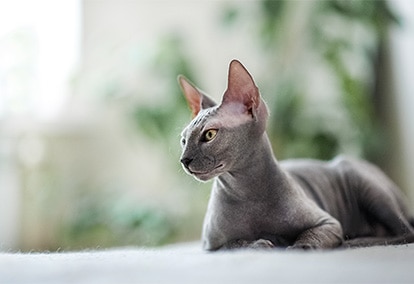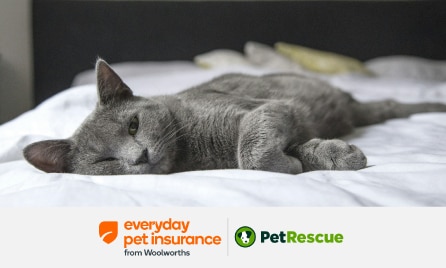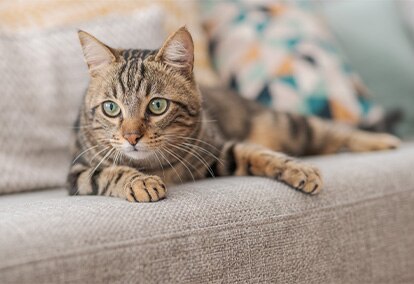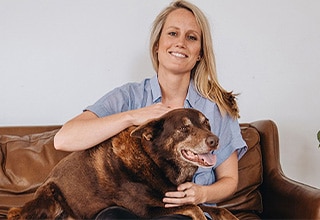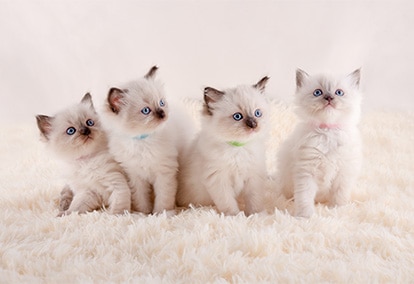- text
-
# Policy Terms and Conditions, exclusions and limits apply. Benefit limit amounts vary by level of cover.
Sphynx Cat Breed Information.
- Sphynx Cat Breed Information.
- What type of breed is a Sphynx?
- History of the Sphynx.
- Sphynx appearance and characteristics.
- Sphynx personality and temperament.
- Sphynx breed traits.
- Sphynx lifespan.
- The dos and don’ts of caring for a Sphynx.
- Need Pet Insurance for your cat?
- Why pick Everyday Pet Insurance?
- Important Information.
What type of breed is a Sphynx?
The Sphynx is one of the most distinctive feline breeds. It is unique for its hairlessness and highly social, outgoing and affectionate nature. The Sphynx has a striking appearance as, in addition to hairlessness, it has large batlike ears, high cheekbones, few or no whiskers and skin folds. Skin folds (wrinkles) covering the face and neck, give the breed a particularly expressive appearance. Sphynxes are medium-sized and lightly muscled cats. The breed comes in a broad range of colours and fur markings.
History of the Sphynx.
The Sphynx cat may draw its namesake from ancient Egyptian statues worn smooth by wind and sand; however, the breed’s history is relatively modern. Sphynxes originated in Canada in 1966 and were first known as “The Canadian Hairless”, “Moonstone Cats” and “Canadian Sphynx”. The breed is less a product of design and more one of default: a genetic mutation which causes hairlessness. The breed’s history includes a record of a domestic shorthair cat that gave birth to a hairless kitten.
This kitten, recognised for its unique appearance, was bred to develop the hairless gene. Breeding programs created at the time to establish the Sphynx focused on retaining it's appearance while also developing a healthy and hardy cat.
